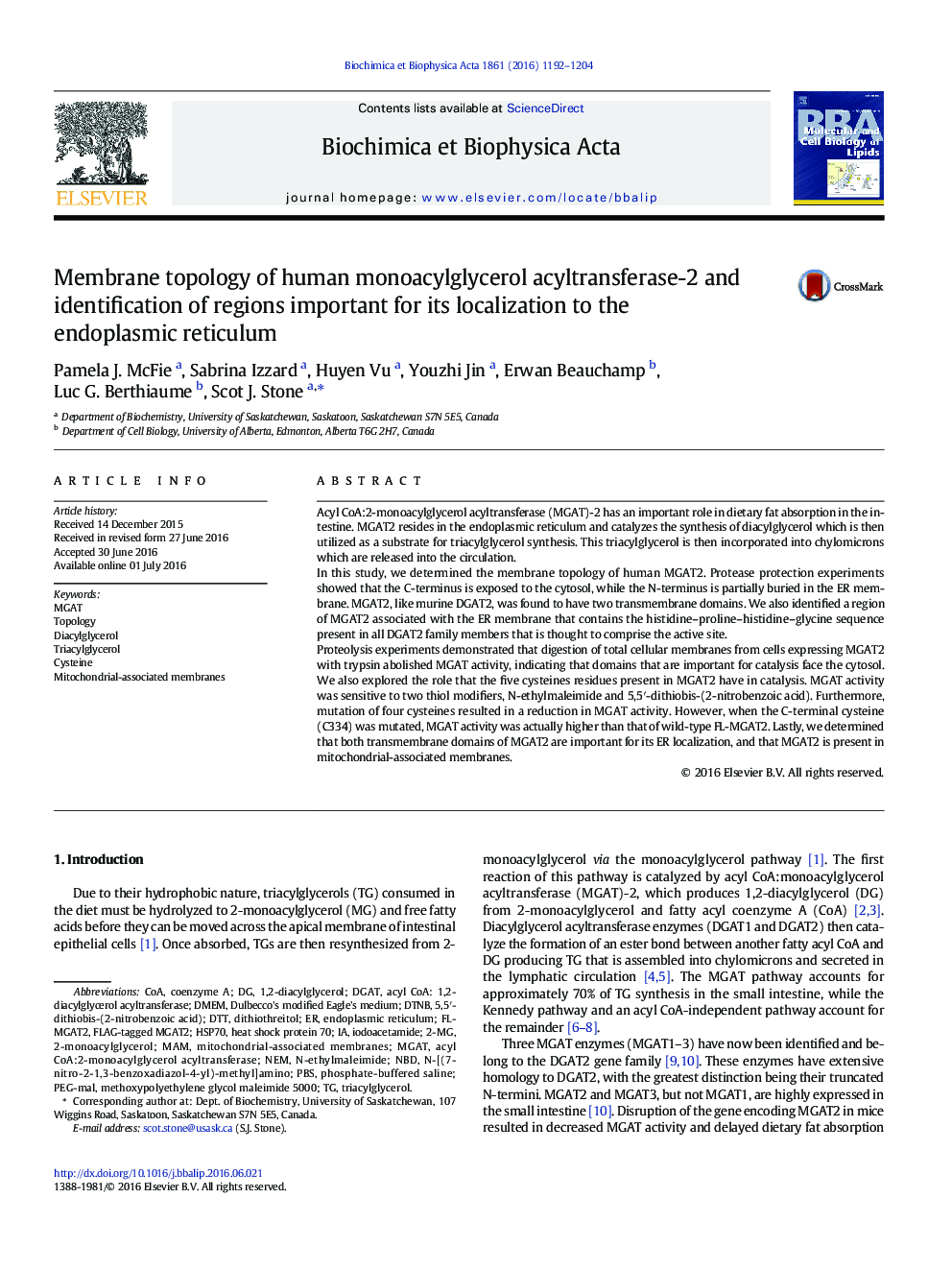| Article ID | Journal | Published Year | Pages | File Type |
|---|---|---|---|---|
| 8301622 | Biochimica et Biophysica Acta (BBA) - Molecular and Cell Biology of Lipids | 2016 | 13 Pages |
Abstract
Proteolysis experiments demonstrated that digestion of total cellular membranes from cells expressing MGAT2 with trypsin abolished MGAT activity, indicating that domains that are important for catalysis face the cytosol. We also explored the role that the five cysteines residues present in MGAT2 have in catalysis. MGAT activity was sensitive to two thiol modifiers, N-ethylmaleimide and 5,5â²-dithiobis-(2-nitrobenzoic acid). Furthermore, mutation of four cysteines resulted in a reduction in MGAT activity. However, when the C-terminal cysteine (C334) was mutated, MGAT activity was actually higher than that of wild-type FL-MGAT2. Lastly, we determined that both transmembrane domains of MGAT2 are important for its ER localization, and that MGAT2 is present in mitochondrial-associated membranes.
Keywords
Related Topics
Life Sciences
Biochemistry, Genetics and Molecular Biology
Biochemistry
Authors
Pamela J. McFie, Sabrina Izzard, Huyen Vu, Youzhi Jin, Erwan Beauchamp, Luc G. Berthiaume, Scot J. Stone,
